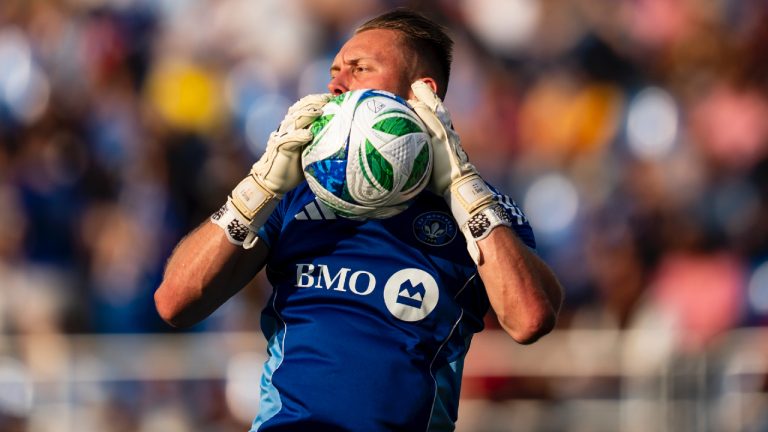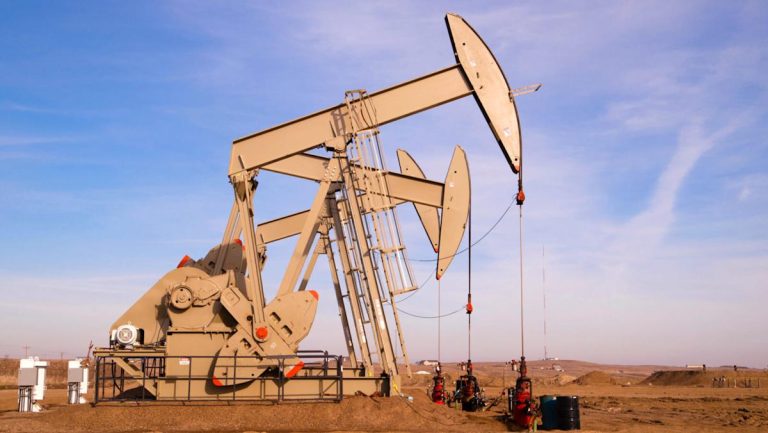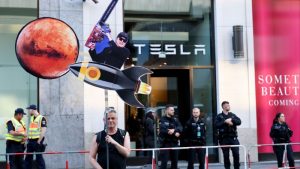Following Lando Norris’ claim that Red Bull have been “just as quick” as McLaren at stages of the 2025 Formula 1 season, Sky Sports F1 analyses the accuracy of the Briton’s assessment.
Having watched his team-mate Oscar Piastri triumph in Saudi Arabia to give McLaren a fourth win in the opening five rounds of the season, an exasperated Norris sought to dismiss a narrative that his squad should be dominating the rest of the field.
McLaren lead the Constructors’ Championship by 77 points ahead of this weekend’s Miami Grand Prix, live on Sky Sports F1, but reigning champion Max Verstappen is just 12 points behind Drivers’ Championship leader Piastri, and only two points back from second-placed Norris.
The consensus in the paddock has largely been that McLaren have had the fastest car every race and have missed a trick by failing to open up a bigger advantage during that period, but Norris disputes that.
What did Norris claim?
“They’re just as quick in qualy in most sessions, they’re just as quick as us in the race. Just because we’re quick in practice, people just keep coming up with all this c**p,” Norris told Sky Sports F1 after recovering from a crash in qualifying to finish fourth in Saudi Arabia.
“They can keep saying what they want. We don’t believe we’re much ahead, as showed. I think Max was probably the quickest out in Saudi Arabia, if he didn’t have that five-second penalty, so we have work to do.
“People keep saying that we’re the best, we’re the quickest, blah blah blah, but it’s just because we show a bit more pace in practice and then we don’t have anything left when it gets to qualy.
“But that’s our way of doing things. That’s how we feel we optimise things. If we didn’t do it that way, we would be even further back. I’m happy with the work we’re doing. People just need to recalibrate that… we have a great car, and probably the quickest on average, for sure, but clearly not enough.”
George Russell, who is 26 points off Piastri in fourth in the standings, said after Saudi Arabia that McLaren are still “one step ahead”, which was something of a retreat from his claim after the season-opener in Australia that the MCL39 “should win every race”.
Verstappen was not keen to discuss his rival’s pace in Jeddah but has previously goaded his rivals by claiming “you wouldn’t have seen me”, had he been driving the McLaren at Suzuka, where he claimed an upset to win for Red Bull.
Bernie breaks it down!
So if McLaren do have the best car, how far are they actually ahead of their rivals?
We called upon Sky Sports F1’s very own strategy expert Bernie Collins to take a closer look at the data from the opening five rounds of the season.
Along with assessing the results, Bernie has also been keeping track of which driver would have had the ‘theoretical best lap’ (TBL) at each circuit, had they have strung their three best sectors together in qualifying.
TBL is not a perfect measurement due to the fact that, especially on a surface like the one in Bahrain which is harsh on tyres, a driver pushing too hard in the first sector might then prevent them from being able to go as fast in the final sector.
Qualifying is ultimately the best available read on car pace, given it removes the unknowns of fuel load and engine mode, as well as tyre saving that can be occurring during practice sessions and races.
Australian Grand Prix
Pole position: Lando Norris
McLaren locked out the front row in Melbourne, with the fastest non-McLaren, Verstappen, nearly four tenths off pole-sitter Norris.
At the time, it was an ominous sign for the rest of the field but this is the biggest McLaren pole to non-McLaren margin we have seen so far.
Both left nothing on the table in Q3 in terms of TBL, although that was automatic for Norris given his first effort was deleted for a track limits breach.
It was actually Russell who failed to get the most out of his Mercedes, giving up almost two tenths from his TBL in a swing that saw him lose out on third to Verstappen.
Race winner: Lando Norris
The race was chaotic in the wet, making it impossible to get a read on dry-tyre pace. However, Verstappen overtook Piastri on the opening lap before the McLaren driver got him back on Lap 17.
There was a Safety Car on Lap 34, by which point Verstappen had dropped to 15 seconds behind Piastri, so was around one second per lap slower on degrading intermediates, a huge margin in F1. Russell was another 15 seconds back from Verstappen.
Although Verstappen kept up with Norris during the latter stages of the grand prix after Piastri had fallen victim to the returning rain, it was only a six-lap sprint to the end. It’s fair to say, McLaren’s pace advantage was significant over one lap and a long race stint.
Chinese Grand Prix
Pole position: Oscar Piastri
Russell split the McLarens in qualifying with a superb lap, with Verstappen in fourth and the Ferraris on the third row of the grid.
The gaps were much closer than they had been in Melbourne, but both McLaren drivers were guilty of failing to optimise their performance in Q3.
Piastri was 0.076s off his TBL, while Norris gave up almost double that time. Verstappen also failed to pull out his best lap, with Russell punishing the latter duo by nailing his effort.
Race winner: Oscar Piastri
In the race, Norris got Russell into Turn 1 but the Mercedes driver stayed within three seconds and undercut Norris in the only pit-stop phase.
Norris was able to get him back though and just held onto second after a late brake issue. Piastri finished 11 seconds clear of Russell.
Meanwhile, Verstappen fell to 13 seconds behind leader Piastri on the first medium tyre stint, but only dropped three more seconds on the hards – something we will return to later.
Japanese Grand Prix
Pole position: Max Verstappen
One of the all-time great F1 laps from Verstappen gave him pole position over both McLarens on a rare day where a driver in an arguably slower car took top spot in qualifying.
That idea was backed up by the respective TBLs, with Piastri and Norris both failing to put together theoretical laps that would have beaten Verstappen.
However, in both cases the margins were very small, well under a tenth of a second, perhaps suggesting Verstappen’s lap was excellent but not necessarily the miracle it was made out to be at the time.
Race winner: Max Verstappen
Again, McLaren had the quicker car in the race but Verstappen had the all-important track position and managed his tyres perfectly.
Piastri, in third, was four seconds behind Verstappen before he pitted but was unable to undercut the Dutchman.
Verstappen and Norris came in together with over one second separating them but a slow pit stop for Verstappen meant the pair came out of the pit lane almost side by side.
After that, the McLaren duo kept Verstappen honest but did not have a big enough pace advantage to seriously challenge the Red Bull driver.
As for Russell, he was nine seconds behind when he made his only pit stop and that deficit doubled in the last stint of the race on the hards.
Bahrain Grand Prix
Pole position: Oscar Piastri
McLaren were expected to lock out the front row after they topped every practice session, Q1 and Q2. However, Norris made a mess of Q3 and qualified sixth, but still ahead of Verstappen.
Despite Verstappen’s struggles, he was still able to maximise the performance of his Red Bull in terms of TBL, as were Piastri and Russell.
Norris was the only one of the quartet not to get the most out of his car in Q3, giving up just over two tenths of a second, a margin that would have put him third, rather than sixth on the grid.
Race winner: Oscar Piastri
Bahrain is the only multiple-stop race in the dry so far. Piastri dominated the whole race though, pulling a four-second lead over Russell before the first pit stops. Verstappen, who was unhappy on the radio, was 10 seconds back in the bunch and at one point found himself at the back.
A Safety Car on Lap 32 for debris neutralised the strategies but Russell was seven seconds behind Piastri when it came out.
For the restart, and the remainder of the Sakhir race, Russell was on softs and Piastri on mediums. Meanwhile, Verstappen was fighting back, in traffic, so his race is hard to read, but Red Bull seemed to have the fourth fastest car.
Saudi Arabian Grand Prix
Pole position: Max Verstappen
Qualifying in Saudi Arabia needs to be analysed slightly differently due to the fact Norris crashed on his first run in Q3, making it tricky to compare his pace with his rivals on a rapidly improving surface.
Therefore, we’ve separated the data from Q2 and Q3 to see where Norris stood at that point. In doing so, it must be acknowledged that the drivers would not necessarily be putting everything on the line in Q2 in the same way that they would with their final runs in Q3.
McLaren appeared to be in good shape during Q2, with Norris acing his lap to be half a tenth clear of his rivals. Piastri had made a minor error, without which he would have been almost level with his team-mate.
Verstappen and Russell were both in striking distance, and close to getting the maximum out of their cars.
However, Norris would make the costly error of hitting the wall on his first flying lap in Q3, condemning himself to 10th on the grid.
That left a thrilling battle between the other three, which Verstappen came out on top of as each of the trio could not quite manage to put together the perfect lap under pressure.
However, the very similar margin between each of their actual times and TBLs, meant the order would have stayed the same had they all maximised.
Race winner: Oscar Piastri
In the race, Verstappen picked up a five-second time penalty but Piastri had fallen three seconds behind before the pit stops and Russell was 12 seconds off the lead.
Verstappen came out four seconds behind Piastri after his pit stop, a gap which remained largely constant on the hard tyres for the rest of the race.
Whether Piastri was fully pushing or just controlling things out in front is unclear though.
Russell suffered from overheating and dropped away as the race progressed, which could be an outlier for Mercedes given they did not appear to have issues in previous races.
So what can we conclude?
Let’s look at one-lap pace first where we can see the ultimate speed of the cars.
Piastri, remarkably, has either taken pole position or been less than one tenth off pole. Norris is second on the average margin to pole then come Verstappen and Russell, who are two tenths down on Piastri’s average.
McLaren have had a car that can take pole at every track, whereas Red Bull and Mercedes have not. However, the margins are tight and anyone who produces something special, like we saw from Norris in Australia, Piastri in China or Verstappen in Japan and Saudi Arabia, can take pole.
We should not read too much into the race gaps at the chequered flag. For example, Piastri spun in Melbourne so his gap to race-winner Norris is not representative. Once you throw in Safety Cars and drivers getting stuck in traffic, things get even more complicated when looking at a race classification.
What’s clear is that McLaren seem to have an advantage when there is high tyre wear, or on softer compounds, when the tyres also degrade more.
The only race they have not won is Suzuka, where most people would say they had the fastest car, so they are stronger in race trim compared to qualifying, mainly due to better tyre degradation.
Sky Sports F1’s Karun Chandhok summarises things nicely for us: “McLaren have the consistently fastest car. We see George in qualifying he can do it, but it’s not quite there in the race.
“Max is able to get there at certain tracks, not everywhere. But across different layouts, different conditions, different lengths in qualifying and the race, McLaren is consistently the fastest car and Lando needs to maximise it.”
How much difference does a driver make?
This is always a debate which F1 fans have. How much quicker per lap can a driver be compared to their rivals?
Verstappen is seen as the best driver in F1 but what does that actually mean in numbers? Maybe he can give you one or two tenths of pace per lap at most, but it’s almost impossible to put a number on it. There are too many variables and it depends on how his rivals perform.
Whatever you think that number is, the gaps between McLaren and the others over one lap are just about close enough for Mercedes and Red Bull to make a difference, if Norris or Piastri don’t get everything together.
Some circuits allow the drivers to showcase their talent and quality more if they take risks in qualifying or defend hard in a race to keep their rival behind – like we saw with Russell against Norris at the end of the Bahrain Grand Prix, for example.
So, McLaren have a small advantage, but it requires the team to operate perfectly and the drivers to deliver to claim pole and convert it into victory.
Sky Sports F1’s Miami GP schedule
Thursday May 1
7pm: Drivers’ Press Conference
Friday May 2
3pm: F1 Academy Practice 1
5pm: Miami GP Practice (session starts at 5.30pm)
7.30pm: Team Bosses’ Press Conference
8.15pm: F1 Academy Practice 2
9.05pm: Miami GP Sprint Qualifying (session starts at 9.30pm)
Saturday May 3
3.20pm: F1 Academy Qualifying
4pm: MIAMI GP SPRINT (race starts at 5pm)
6.30pm: Ted’s Sprint Notebook
7.50pm: F1 Academy Race 1
8.35pm: Miami GP Qualifying build-up*
9pm: MIAMI GP QUALIFYING*
11pm: Ted’s Qualifying Notebook*
Sunday May 4
6pm: F1 Academy Race 2
7.30pm: Grand Prix Sunday: Miami GP build-up*
9pm: The MIAMI GRAND PRIX*
11pm: Chequered Flag: Miami GP reaction*
Midnight: Ted’s Notebook
*also live on Sky Sports Main Event
Formula 1 heads to Miami for a Sprint weekend, starting this Friday live on Sky Sports F1. Stream Sky Sports with NOW – no contract, cancel anytime

















